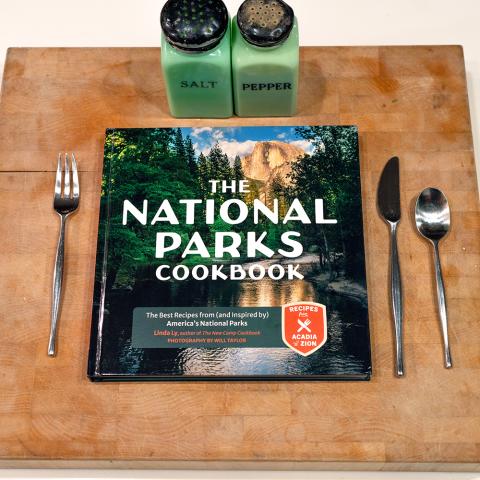Editor's note:Yellowstone Caldera Chronicles is a weekly column written by scientists and collaborators of the Yellowstone Volcano Observatory. This week's contribution is from R. Greg Vaughan, research scientist with the U.S. Geological Survey.
Yellowstone National Park contains the world’s largest concentration of geothermal features. In fact, this is the primary reason it was set aside as a National Park in 1872.
In Yellowstone, it is often stated that there are more than 10,000 thermal features, including hot springs, geysers, mud pots, and fumaroles. How do we know that? Did someone count them? Well, yes, but making a perfectly accurate count of unique thermal features is nearly impossible, partly because they are changing so frequently. In the time it would take to map all of them, some would have died out and many new ones would have appeared. For example, a newly formed fumarole was observed in the Roadside Springs Thermal Area in August 2024, and a newly emerging thermal area with multiple fumaroles was discovered near the Tern Lake thermal area in 2018. There are also many thermal features that are located under Yellowstone’s lakes that are not included in any inventory.
Geysers are a specific type of hot spring where an underground hot water reservoir and the characteristics of the plumbing system allow discrete, episodic eruptions of hot water at the surface. There are only about 1,000 active geysers on Earth; about half of them are in Yellowstone! According to Scott Bryan, in the 2008 edition of his book The Geysers of Yellowstone, there are at least 700 geysers in Yellowstone, with at least 500 that actively erupt; the remainder are dormant.
Most of Yellowstone’s more than 10,000 thermal features are clustered into about 120 distinct thermal areas and thermal water bodies. A thermal area is a nearly continuous geologic unit that contains multiple thermal features; hydrothermally altered rocks and/or hydrothermal mineral deposits; heated ground and/or geothermal gas emissions; and that is generally barren of vegetation or has stressed/dying vegetation. A thermal water body is usually a lake, pond, or wetland area, that receives heated water from a nearby thermal area, nearshore thermal springs, or from underwater vents.
Assessment of Yellowstone’s thermal areas and thermal features comes from field observations, measurements from high-resolution airborne and commercial satellite images, and from quantitative analysis of Landsat 8 and 9 nighttime thermal infrared images.

Map of Yellowstone’s thermal areas. Inset commercial satellite images highlight thermal areas that are mentioned below: Sulphur Hills (©2022, Maxar, USG), Turbid Lake (©2022, Maxar, USG), and Lower Geyser Basin (©2015, Maxar, USG). This work utilized data made available through the NASA Commercial SmallSat Data Acquisition Program. The USGS acknowledges the use of imagery from the SmallSat Data Explorer application (https://csdap.earthdata.nasa.gov), and Maxar’s NEXTVIEW End User License Agreement.
Despite the impressive size of Yellowstone National Park (about 8,992 km2, or 2.2 million acres), the total surface area covered by thermal areas is only about 70 km2 (17,300 acres)—less than 1% of the park’s area. If you closed your eyes and randomly threw a dart at a map of Yellowstone, you are very unlikely to hit a thermal area! The distribution of thermal areas can be seen in an updated map of Yellowstone’s thermal areas that was recently published after careful analysis of satellite remote sensing data and ground-based observations.
The Sulphur Hills Thermal Area, north of Yellowstone Lake, is the hottest thermal area in Yellowstone, with pixel temperatures in satellite images up to 46 °C (83 °F) above the background. At Sulphur Hills, there is a large area of diffusely venting warm ground that is dotted with dozens of small, isolated fumaroles that are venting gases at 93 °C (200 °F, the boiling temperature at that elevation) right at the surface. Thermal infrared images from satellite instruments like Landsat 8 and 9 have pixels that are about the size of a football field, which means they measure thermally mixed pixels that represent the average temperature of sub-pixel-scale features. So, 46 °C (83 °F) above background is pretty hot. Given the size of the area (0.69 km2, or 171 acres), its geothermal radiant power output is 40–70 MW (megawatts = 1 million watts).
Turbid Lake, also just north of Yellowstone Lake, is the largest lake in Yellowstone where a significant portion of the surface remains ice free even during the coldest winters. This is due to thermal input from nearby springs and underwater vents. The lake is the remnant of a large hydrothermal explosion crater that is about 1 km (0.6 mi) across, and it has pixel temperatures up to 28 °C (50 °F) above background and a geothermal radiant power output of about 40–74 MW.
Lower Geyser Basin is the largest thermal area in the park—at 15.6 km2 (3,855 acres) it is slightly larger than the town of Gardiner, MT. Its hottest features have pixel temperatures up to 32 °C (58 °F) above background, and its geothermal radiant power output ranges from around 200 to more than 500 MW.

View of Lower Geyser Basin. Note active thermal pools (Great Fountain Geyser) in the foreground with thermal grasslands—kept treeless by hot soils—and lodgepole pine forest in the distance/George Marler, 1959.
Summing the estimated geothermal radiant power output for all the thermal areas in Yellowstone yields values that range from 1,500 to 3,100 MW. To put this into context, 1 MW could power the average home in the U.S for about 1.2 months, or power an electric car for about 3,600 miles. Scale this up by 1,500 or 3,100 times and you can appreciate the immensity of the Yellowstone geothermal system.




 Support Essential Coverage of Essential Places
Support Essential Coverage of Essential Places






